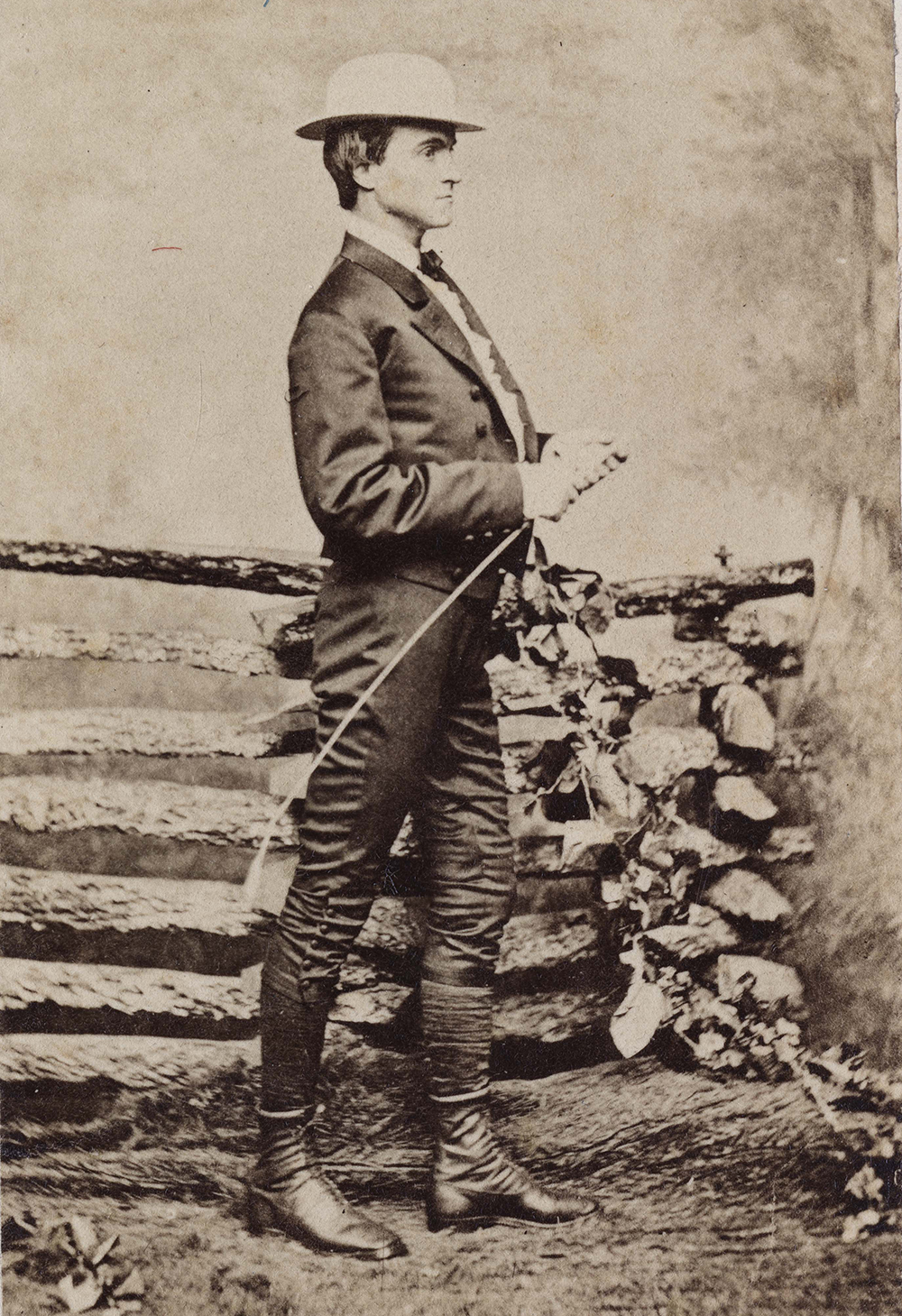Ready, Set, Show! - 5 minutes read

In January 1876 one of the most spectacular sporting celebrities of the Victorian age first set foot in Britain. Edward Payson Weston was an American athlete who had made himself a household name across two continents for his skill at ‘pedestrianism’: the art of long-distance competitive walking.
Professional walking might not rank as much of a crowd-pleaser today, but in the 1800s the sport was enormously popular and profitable. At Weston’s first match in the UK, 5,000 spectators packed into the London Agricultural Hall to watch him challenge the English champion walker William Perkins. Over the next 24 hours, as the two men trudged around the circular track laid out in the centre of the hall, the feverish crowd churned around them, smoking, drinking, gambling and socialising. By the end, Weston alone had lasted the full time and walked a total of 109½ miles, while Perkins, ‘ashy pale and thoroughly exhausted’, had been forced to withdraw. Papers the next day reported that there was so much ‘blood oozing through Perkins’s shoes’ that they ‘had to be cut off his feet’. When the judges announced Weston’s victory, the American was mobbed by so many admirers that officials had to request ‘the aid of several gentlemen of pugilistic appearance and tendencies to clear the way’.
This ecstatic reaction was due to the fact that, as well as being a great athlete, Weston was also a charismatic performer who knew how to play to an audience. He was a friend and business partner of P.T. Barnum and shared the great showman’s knack for (as British newspapers put it) the ‘Yankee, high falutin’ style’ of publicity. Where his British opponents tended to race in regular workaday sportswear, Weston had his own distinctive costume: a white wideawake hat, black velvet jacket, black leggings, white kid gloves and a ‘broad blue silk sash’. He cultivated a unique style of walking with staccato movements designed to increase speed and conserve energy, though cynical British commentators were divided on ‘whether it was more like a postman’s walk or the twitching of a galvanized corpse’. And while he walked, Weston liked to read fan mail, share jokes, ‘gaily waft kisses up to the galleries’ and generally play up to the crowd. At one match, he ‘took a cornet and played “God save the queen” as he proceeded on his journey’. This combination of skill and extravagance endeared him to British crowds in a way that few other sportsmen could equal.
In the space of a few months, though, Weston’s celebrity was destined to take another remarkable turn. As a publicity strategy, Weston had invited representatives from the Lancet and British Medical Journal to attend his races and conduct experiments with a view to answering one of the great unsolved mysteries of the day: exactly how the body converted nutrition into muscle and energy. In writing up the results of these experiments it came out that Weston was in the habit of chewing leaves from the coca bush (the source of cocaine) to increase his strength and fortify his endurance during his races.
Based on our modern experiences of sports doping scandals, we might expect the Victorian public to be angry or disappointed at this revelation, but in fact almost the exact opposite occurred. Victorians generally held very different views about the role of performance-enhancing drugs in sport than we do today, seeing ‘restorative’ or ‘strengthening’ drugs as legitimate tools that professional sportsmen could use to assist them. It could even be seen as admirable: proof that an athlete was up to date on the latest scientific discoveries and knew how to apply that knowledge to get the best results out of their body.
J. Ashburton Thompson, the doctor who had first revealed Weston’s use of coca in the British Medical Journal, wrote that: ‘There is no obvious reason why Mr Weston should not take advantage of every aid which his superior knowledge places at his disposal.’ Other papers excitedly noted that, ‘the extraordinary sustaining power’ of the coca leaf was likely to have many ‘popular applications’. The Glasgow Herald concluded a report on Weston’s latest victory with the remark that: ‘If it be indeed true that Weston during his long walks habitually chews a piece of coca leaf, the plant is clearly one to which scientific men cannot too soon turn their attention.’
And, indeed, both the scientific and sporting communities did quickly turn their attention to coca. In 1876, coca leaves were still difficult to reliably import into Britain but, nevertheless, adverts almost immediately began to appear in sporting papers touting ‘COCA LEAVES, The Peruvian Restorative’ for use by tourists, pedestrians, athletes, bicyclists and others. A box of coca leaves from Mottershed and Co. in Manchester could be purchased for 1 shilling and tuppence – postage included. According to the Dublin Telegraph, Mincing Lane (the centre of the spice and herb trade in London) ‘has experienced a downright scare through the sudden demand for the coca plant, which has hitherto been so sparsely used in medicine as to be scarcely known even by name to the ordinary run of London chemists’. Some journals went so far as to speculate that the whole coca incident had actually been a scheme engineered by Weston’s friend P.T. Barnum himself to corner the market in coca and secure ‘a new road to fortune’.
Weston continued to enjoy his career as a remarkable sportsman until his death in 1929. At the time of his passing, more than 50 years after his heyday, British commentators could still recall how he had ‘created a sensation by long distance walking in this country’ and, while Weston’s legacy might now strike us as more strange than sensational, he illustrates how much our attitudes can change towards the sports we most enjoy and the practices in sport that we most admire.
Douglas R.J. Small is Lecturer in 19th-Century Literature at Edge Hill University.
Source: History Today Feed